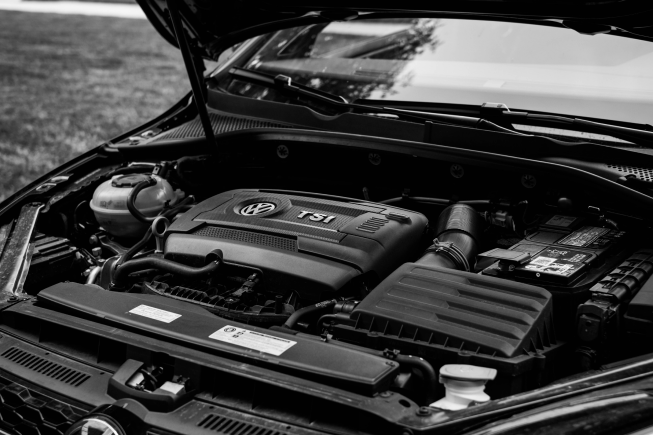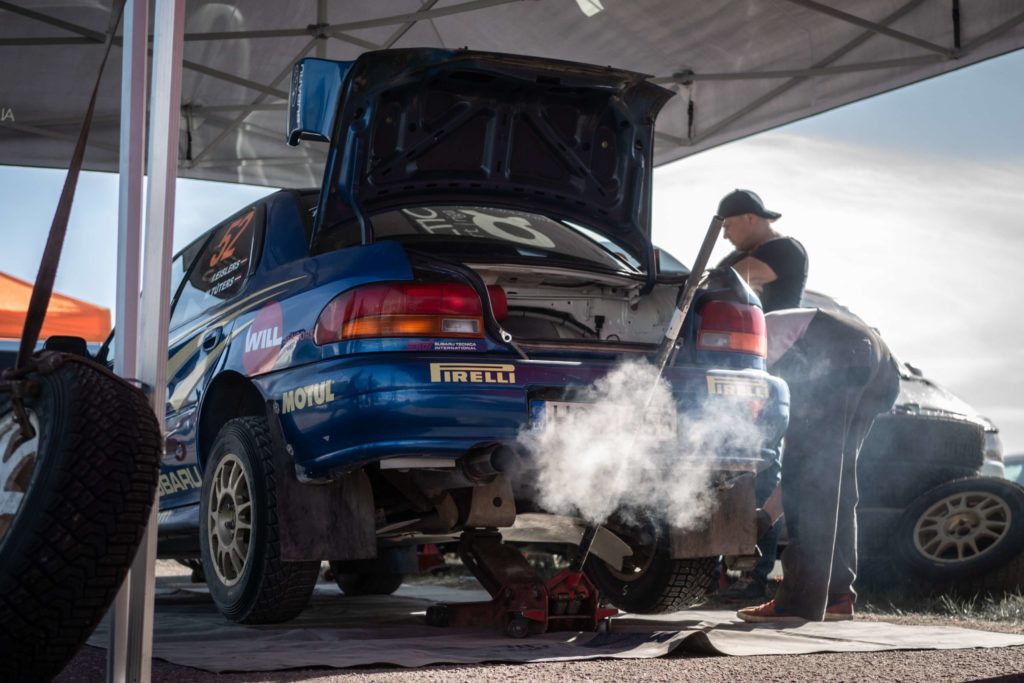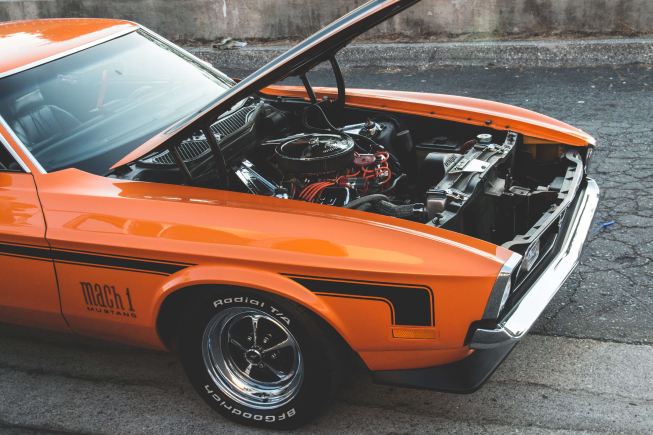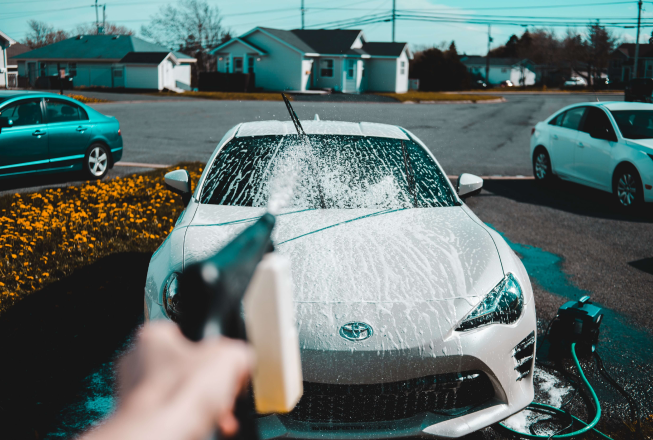If you're in the market for a used car, you'll hear a lot of people talk about mileage – meaning the distance a car has driven over its lifetime. In particular, you'll hear over and over that you should avoid buying a ‘high mileage’ car.
But what is considered high mileage for a used car in the first place? And is it really that important?
In this article, we’re going to take a look at everything you need to know about mileage, from the per-year-average to the problems that begin to arise with a higher-mileage vehicle. We’ll also take a look at some other important factors to consider when buying a used car.
What is Good Mileage for a Car?
Most professional mechanics will tell you that 12,000 miles per year is an accurate estimate for a car that has not been overdriven and considered to have high mileage. Therefore, a vehicle driven for 10 years, would have an acceptable mileage of 120,000 miles.

How Much Mileage is Too Much?
Let’s get straight to the point! The average mileage per year is about 24,000 kilometers.
To see if a car's mileage is within a reasonable range, simply multiply 24,000 by the car's age and see if the mileage reading on the odometer is higher or lower than that. You can also just divide the car's odometer reading by its age to get the average reading.
While most people like to compare cars' mileage to the average reading per year, others believe that any number passed 160,000 km – regardless of the car's age – should be enough to make a buyer cautious.

How Do I Tell if a Car Has Too Many Miles?
While 160,00KM is regarded as a high mileage for cars, there are additional factors that can affect whether a car has too many miles. One of the most important things to consider is where and in what condition the car is being driven in to accumulate such high mileage. When you’re considering purchasing a used car with high mileage, make sure you ask about how they have driven the car, is it mainly on the highway or the city?
- Highway Mileage: If a well-maintained car has 160,000KM in mileage, but mainly drive on the highways and in sparsely populated areas, then the car has definitely had an easier life. An area with fewer traffic lights and stop signs also means that the features of the car are used less often than driving through a dense area.
- City Mileage: Driving through a dense, populated city means frequent stops, tons of idling, constant acceleration and slowdowns, going through speedbumps, and riding through the uneven pavement. These harsher conditions can mean higher wear and tear in the car’s brakes, engine, and suspension.
Many car owners drive in both conditions, so it’s important to ask which area they tend to travel in the most. For example, a car may have high mileage because they are traveling to the city to work through the highway. In this scenario, their car may endure less wear and tear, as much of the traveling is done through a steady path. On the other hand, if the car has the same mileage but mainly used to drive through the city, then it could be in worse shape. Miles is a critical factor to consider, but so is the car’s age, the condition and care of the vehicle, and how it was used by its previous owner.
Is a Car’s High Mileage Always A Deal-Breaker?
The short answer is no.
While some people are sticklers for low mileage on a used car, it doesn't mean that you should write off every decent-looking car with high mileage. Back in the day, old school odometers would "roll over" or go back to 000 miles/ kilometers once they reached a certain threshold (99,999 miles). This is probably how folks came up with the 160,000 km number, as it roughly converts to just under 100,000 miles.
According to Forbes, "motorists are holding onto their cars for longer than ever" these days. Whereas a car manufactured in the 30s could only last a little over six years, today's cars can clock in up to 400,000 kilometers. This is thanks to all the awesome technological advances that have allowed car manufacturers to create longer-lasting car parts at affordable rates.

Pros of purchasing high mileage car vs. a low mileage car
When you’re looking to purchase a used car with high mileage, it’s good to consider the benefits and drawbacks so you have a better understanding of what your needs are. Many buyers are under the impression that cars with higher mileage are often less desirable, however, there are some great advantages to them.
- Better Price: If the price is an important factor for you, then a car with higher mileage might be better for you. Since they are priced lower, they are a more budget-friendly option.
- Regularly Driven: High mileage indicates that the car is used often by its owner. Cars require movement and exercise. If they’re not used regularly, their parts and components can get rusty or become brittle. In this case, a low mileage could indicate costly repairs because they are left in the garage far too often.
Cons of purchasing high mileage car vs. a low mileage car
A low mileage car has obvious advantages in comparison to a high mileage car. For some, they may feel that the condition of the car is much more important, while some people may require low mileage to be a must. However, it’s safe to say that low mileage cars can definitely be more attractive.
- More Wear and Tear: A low mileage car can potentially signify that there is less wear and tear. This could indicate that the car may last longer as it hasn’t been through much damage. Of course, the car’s condition can also be dependent on the way the owner treats their car.
- Lower Resale Value: After a specific mileage, the car’s transmission and performance deteriorates, which makes their resale value much lower. A lower mileage, on the other hand, could account for a higher resale value if you decide to trade it out or sell it. This is because there are more miles for the car and it could still last a longer period of time after it’s been purchased.
Besides Mileage, What Else Should You Consider When Buying A Used Car?
Mileage isn't the only thing you should be looking at in used cars. Here are five equally important questions you should be asking yourself when you're looking at used cars:
What Was The Car Used For?
Even if a car's mileage reads high, it won't mean much unless you know how those numbers were achieved. Certain driving conditions are rougher on cars than others – and I'm not just talking about rough terrain and bad weather.
Stop-and-go traffic isn't just annoying, it's also really bad for a car's engine in the long run. This is because the car isn't given enough time to cool – leading to the buildup of carbon deposits which can destroy the engine. Stop-and-go traffic is also hard on brakes and eventually wears down the car's braking system.
So even if the previous owner only used their car for a 20-minute commute to the city on weekdays, the traffic could have impacted the car's engine and braking system in some pretty significant ways.
In this case, high mileage might actually be an indicator of less wear and tear! If a car was used extensively for long cross-country driving, the engine and braking system might actually be in better shape than a city car.

How Often Was The Car Maintained?
This question is absolutely crucial for anyone looking at used cars, and is especially vital for those considering cars with mileage readings in the hundred thousands.
Buying a used car means considering both deferred and upcoming maintenance. Deferred maintenance refers to any upkeep and repairs that should have been done, but were ignored by the previous owner. Upcoming maintenance, on the other hand, refers to all the common issues that arise in cars that register mileages around 160,000 km and over.
So, how often should a car be serviced? Some experts believe that cars should go in for maintenance at the 5,000 km, 10,000 km, 20,000 km, 25,000 km, 50,000 km, 70,000 km, 90,000 km, and 160,000 km marks. Always remember to ask about the car's maintenance history AND request for the maintenance records so you can double-check if the seller is telling the truth.
Aside from servicing, you should also ask the seller about regular upkeep like washing, keeping the car covered during heavy rains and snow, and doing touch up jobs on the paint. Although these questions seem superficial, dirt, dust, and mud can cause headlights to fade and certain parts to rust.

How Old Is The Used Car?
Again, to reiterate, as technology becomes more advanced, car manufacturers can come up with better materials and reduce the amount of wear and tear newer cars receive over time. So even if a new car has raked in a lot of kilometers in a short amount of time, you can expect it to still be in better condition than some of the older cars on the lot. More on buying a new vs. used car here.
If you're looking at cars that are over 10 years old, you can expect to see some parts that are beginning to deteriorate. The parts that are most susceptible to wear and tear are the suspension arms, ball joint, steering rack, water pump, wheel bearings, fuel pump, flywheel, injector, and automatic gearbox. Rubber parts like wipers, timing belts, bushings, and hoses are also prone to dry rot, especially in more temperate climates.
Has The Car Ever Been Damaged Substantially?
Whether the car has been in a collision, a fire, or a flood, a used car dealer is supposed to be transparent and reveal any major damages done to the vehicle. Depending on the severity of the incident, any significant damage can affect a car's performance and safety – and should lower the car's resale value.
If you've noticed some suspicious signs of damage that don't match up with the seller's story, you can always download a CARFAX Canada report. This report gives you the Vehicle Identification Number and relays to you any existing liens and damages done to the car in the past.
What Is The Car's Make And Model?
As much as people hate to admit it, these two factors really affect a car's reliability over time. Two of the most durable and reliable brands are Toyota and Honda. Most used cars under these brands are still up and running well despite years behind them, and their parts are almost always easy to find.
What Kinds Of Problems Do We See With High Mileage Used Cars?
Before you buy that used car you've been eyeing, make sure to bring a mechanic with you when you meet up with the dealer or private seller and take it out for a test drive. Your mechanic should be able to help you scope out issues in their early stages and tell you what to prepare for in the near future.
Here are some of the most common issues we see with used cars that register higher odometer readings.

Fuel Pump Damage
If the previous owner frequently drove the used car on a low tank or let the tank run out completely, they've run the risk of eventually damaging the car's fuel pump. Ask the seller if these things have ever happened before so you know if you're in for a fuel pump repair any time soon.
Worn Out Brake Pads
As I mentioned, driving your vehicle frequently through stop-start traffic will wear out your brake pads faster than driving long distances. Even more so when you live in areas with a lot of steep hills. Make sure to ask the seller what their previous driving conditions were like, then test out the brakes as much as you can during the test drive to see if you'll have to replace the brake pads soon. Remember however, brake pads are one of the cheapest fixes you can do on your car so don't let that steer you away from an otherwise perfect used car.
Timing Belt Breakage
Depending on your engine's timing configuration, unresolved issues with your timing belt can cause major damages to your engine in the long run. If your engine is an interference type, the timing belt is there to keep the valve and the piston from colliding. If your timing belt snaps and they do crash into each other, this can damage either the valve, piston head, and even the cylinder wall.
To prevent all this from happening, it is suggested to replace the timing belt of used cars at about 100,000 km.
Automatic Transmission Failure
Oftentimes, problems with transmission have to do with the transmission fluid. If the transmission on a used car feels stiff or if the gear shifts awkwardly, you may end up having to check and replace the transmission fluid in due time.
Water Pump Leak
Water pumps are present in cars to deliver coolant to the engine. This keeps the car from overheating. Though water pumps don't break easily, the gaskets and seals can wear out over time, resulting in leakage. Unless you want to handle smoke coming out of your hood in the middle of a warm traffic jam, you shouldn't forget to check the water pump for leaks.
Dead Battery
Battery lifespans have less to do with how many kilometers the car runs and more to do with how often you use it. Batteries typically last about 5 to 6 years, so cars older than that are definitely up for a battery change in the near future.
Damaged Tires
Driving on worn-out tires is a huge risk, especially when it's raining or snowing. You can end up hydroplaning, lose control of your brakes, and become more susceptible to tire blow-outs. Worn out tires can also lose air pressure more quickly, resulting in a reduction of control in steering and braking. If you're looking at a high-mileage car, always check the tires to ensure that they aren't worn out. If you can, just buy brand new tires. Better to be safe than sorry!

How To Take Care Of High-Mileage Cars
Here’s a simple, two-part solution for looking after high-mileage cars:
- Treat your car with care. This means watching where you're going, avoiding bumpy roads, and avoiding hitting the brakes too hard. The better care you take of your car, the less chance there is of your car breaking down.
- Clean it regularly. Debris, grime, rust, animal droppings. All of these can slowly damage our cars' paint jobs and cause damage and corrosion.
How do I maintain my car after 100,000 KM/Miles?
For many vehicle owners, they want to get their bang for the buck. Whether you’ve purchased a high mileage car or you currently own one, you might be considering ways to maintain the car. More often than not, maintenance after 100,000 kilometres can get expensive. However, major maintenance and repairs can extend the lifespan of your car. Here are ways to maintain your 100K KM car:
- Fluids: The fluids in your car is extremely crucial to your vehicle. The fluids can lose effect overtime and possibly have dirt debris build-up. Get your car’s oil, transmission fluid, power steering fluid, coolant, and brake fluid replaced. It’s important to note that not all fluids need to replaced, as certain fluids may be permanently sealed and will not require a replacement.
- Timing Belt: When traveling in a country with harsh weather conditions, like Canada, you’ll likely need to check for replacements on your timing belt. Once your mileage has reached over 100,000KM, it’s likely that the timing belt has endured quite a number of damage. Consider replacing your timing belt because a broken timing belt can affect your engine.
- Water Pump: Many water pumps are located behind the timing cover. Therefore, when you’re replacing the timing belt, the mechanic may also suggest that you replace your water pump too.
- Brakes: Inspect the pads to make sure there is still plenty of material. Check to see if your disc brakes’ rotors are still functioning properly. Spot for any wear and tear. You can get the rotors and pads inspected by a mechanic to see if they need to be replaced.
- Tires: Check the car tire’s wear and tear. Ensure they are inflated at the proper level and the car treads haven’t worn out.
Conclusion
Though high-mileage used cars are usually considered impractical and unreliable, this is a bit of an outdated mindset when it comes to modern vehicles. As long as you’re buying a car made post-2000 a high mileage vehicle shouldn’t be a dealbreaker.
Whatever the case, when you’re looking at used cars, always bring a mechanic along to check for potential problems and signs of wear and tear. You should also be as thorough as possible with the seller, you want to make sure that you’re buying a safe car that will last for years to come.
